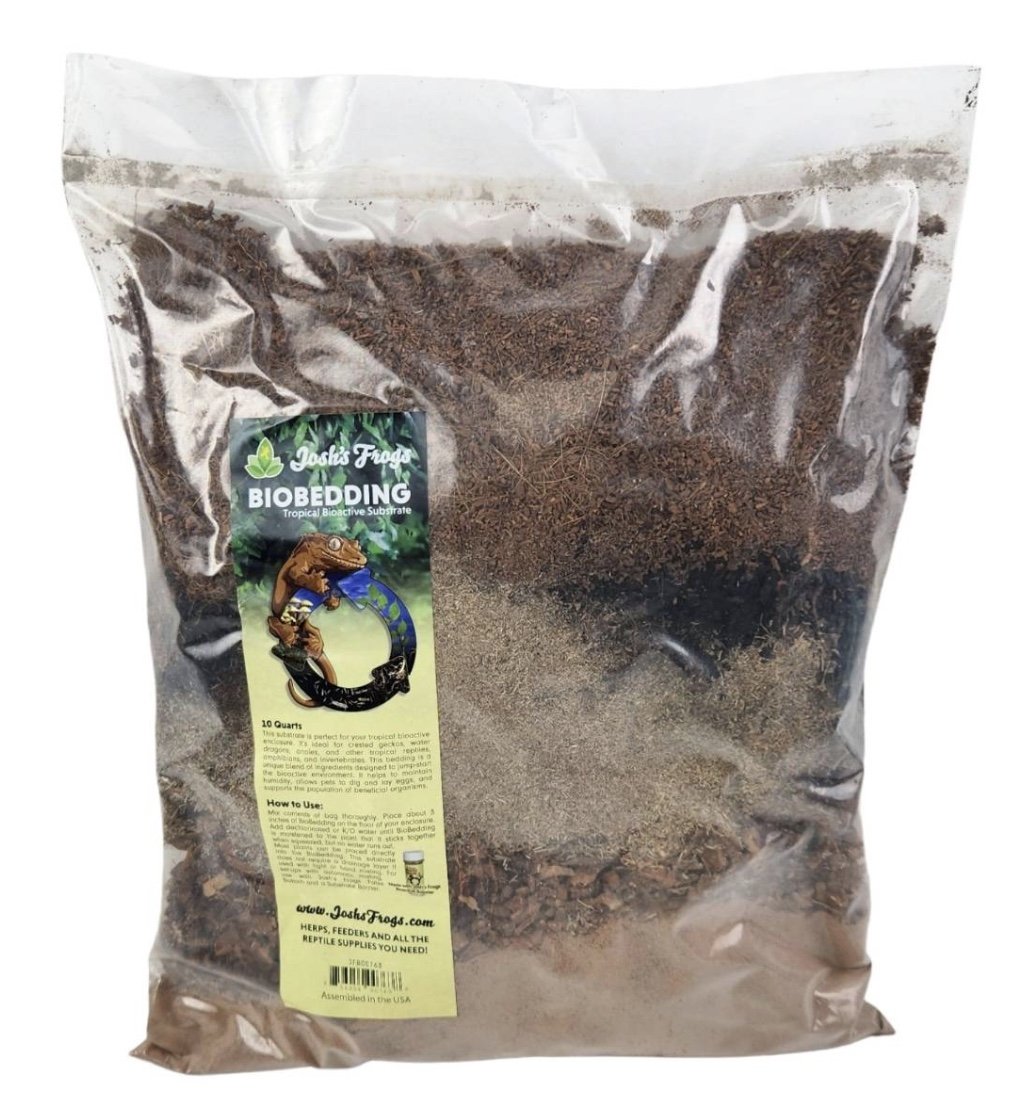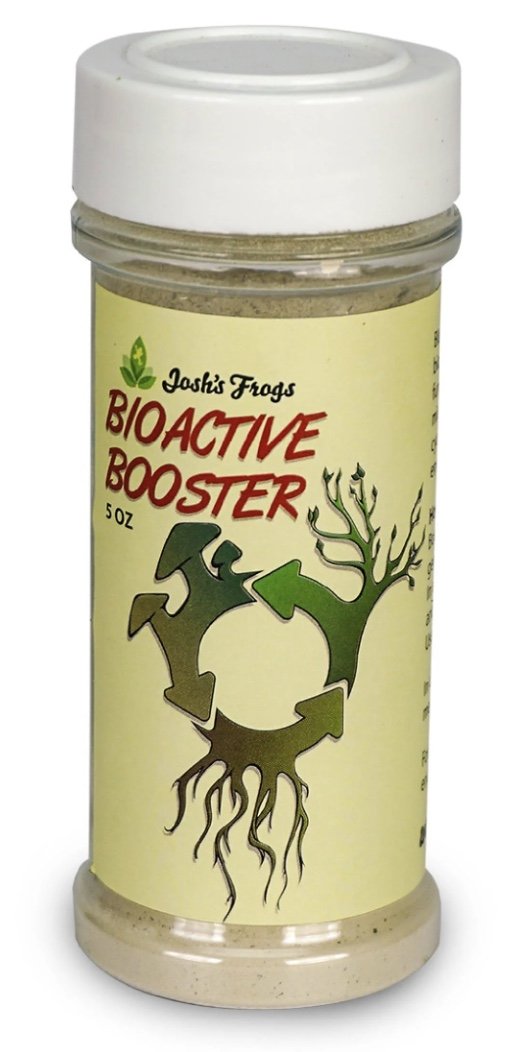
How to build a bioactive
chameleon enclosure
Commonly asked questions:
-
It is an ecosystem that includes living organisms that all work together to provide your reptile with a habitat most similar to what they would experience in the wild. It is a great option for anyone who is looking to step up their care or take on an additional challenge. If you are new to keeping reptiles and/or chameleons I would advise mastering the other elements of chameleon care (UVB, supplements, humidity, etc.) before trying to make the enclosure bioactive. It’s something you can always do later on.
-
Bioactive enclosures are less maintenance since any poop, shed, dead leaves, etc. will be eaten and broken down by the clean up crew. They are also as close to a chameleon’s natural habitat as we can get in captivity. Bioactive enclosures can also help raise the humidity levels which can be a pro or a con depending on where you live.
-
A lot of keepers use PVC/hybrid or glass enclosures for their bioactive setups. These materials can make it easier to hold in the substrate and regulate the temperatures and humidity in challenging environments. PVC/hybrid or glass enclosures are more expensive than screen enclosures so I decided to convert an XL Reptibreeze screen enclosure into a bioactive enclosure so that people who are balling on a budget or live somewhere where they can achieve the required temps and humidity.
-
Bioactive enclosures include substrate, live plants, and a clean up crew. A naturalistic enclosure can have substrate, live plants, fake plants, and no clean up crew. The presence of live plants and substrate does not make an enclosure bioactive. It has to also have a clean up crew (isopods & springtails).
How to make a bioactive enclosure:
Since chameleons have vertical enclosures we’re really only making changes to the bottom of the enclosure in order to make it bioactive. Please refer to the other pages on this website to learn about proper lighting, attaching plants and branches, hydration, etc.
-
If you decide to use the enclosure itself to hold the substrate, make sure it is waterproofed. Either with waterpoof silicone or by using something like a pond liner (that’s what I used for my screen enclosure) to ensure no water or substrate will leak out. You could also use a tree pouch, tub, or whatever great idea you can come up with! Just be sure you can handle all of the water.
-
Some substrates will require a drainage layer to handle all of the water within the enclosure. Terra Firma is what I use and it does not require a drainage layer as long as your substrate is at least 6” deep. Other bioactive substrates will require a layer of hydroballs followed by a layer of mesh/window screen before putting in the soil.
-
Leaf litter is safe dried leaves that give the isopods and springtails something to snack on.
-
Being able to plant your live plants directly in the bioactive soil is one of the biggest perks so you don’t have the look of the bulky pots at the bottom of your enclosure. Just be mindful about what different light and water requirements each plant has and put them in the appropriate area in your enclosure. If you are looking for ideas on what plants to use please check out my safe plant list!
-
The last big piece of a bioactive enclosure is the clean up crew! Dwarf White isopods are my personal recommendation to use since they are small enough your chameleon won’t be interested in them and they do well in humid environments. Make sure you also get some springtails to help keep your soil nice and healthy and clean!
-
There’s a few different ones you can use but they help jump start your substrate and keep it healthy.
-
With all of the live plants and live clean up crew it is essential that you are watering your bioactive enclosure on a regular basis. This can be done by hand but I highly recommend the MistKing misting system to anyone looking to automate. Last but not least, it is normal and expected for your humidity levels to skyrocket once you add in the new substrate. Give the enclosure 1-2 weeks to dry out and have the humidity levels come down to a normal level. If your levels are still too high after doing that then you may need to adjust your misting schedule, etc.
Recommended Bioactive Supplies — These are affiliate links. Thank you in advance for shopping through them!
Not only does the Terra Firma not need a drainage layer and provides excellent organic nutrition for your enclosure by creating necessary air pockets for root development and plant health. This is what I personally use.
Leaf litter provides necessary surface area for beneficial bacterial and fungal process to take hold as well as provide a food source for your clean up crew.
Dwarf White isopods are small enough to not being eaten by chameleons and do well in humid environments.
24x24x48” Terra Firma bioactive chameleon kit
Springtails help break down sheds, decaying plant matter, mold, and waste.
24x24x48” Terra Firma bioactive substrate kit
LECA is used for a drainage layer for any substrates that are not self draining.
Substrate Barrier fits between the drainage layer and substrate to help handle excess water.
Tropical Biobedding is Josh’s Frogs unique blend of organic and inorganic ingredients, trace elements, and beneficial fungi for humid bioactive environments.
Dried leaves can help absorb excess moisture in the terrarium, preventing the growth of mold and fungi. They are also a food source for isopods and springtails.
Springtails help break down sheds, decaying plant matter, mold, and waste.
Dwarf White isopods are small enough to not being eaten by chameleons and do well in humid environments.
Bioactive Booster contains beneficial fungi and trace elements that will help plants and microfauna populations establish and grow faster.
Dwarf White isopods and springtails bundle making it cost effective and easy!
BioShot is the BioDude's unique microbial supplement and organic fertilizer for bioactive vivariums. It has mycorrhizal fungi and natural insect-based fertilizer to help breakdown organic waste and ingredients to help with plant growth.
Tree pouches can be used to put bioactive substrate in a screen enclosure. It is super simple to use but is not waterproof.
Helpful videos:















